Photo collage: thetoc.gr
Anastasia Balezdrova
The exhibition presenting the ancient Greeks’ idea of the afterlife and the fate of the human soul after the physical end of the mortal body has inevitably provoked associations with one of the major topics that have monopolized public attention in recent months, namely the excavations of the tomb in Amphipolis.
Some of the exhibits at the Cycladic Art Museum were created in the same period or present works the topic of which coincides with that of the findings discovered at the Kasta hill near Serres.
Therefore, during the presentation of the exhibition to the media, its curator, archaeologist and museum director Nikolaos Stampolidis, presented several interpretations of the findings in Amphipolis.
Among the most impressive discoveries in Amphipolis are two female statues, in the second chamber, called "caryatids" found by a group of archaeologists led by Catherine Peristeri. According to Stampolidis however, this assessment is wrong, as the typical pedestals on which the caryatids carry baskets are missing from the heads of the statues. "What we see there are actually statues of goddess of the underworld, the Moon and the night sky, Hecate, who was worshiped by ancient Greeks as a patroness of homes, arable land and graves," he said.
The "Afterlife" exhibition presents an exhibit called "three-headed Hecate" that dates back to the first century BC. Archaeologists assume that such images were placed outside the front door of houses in order to protect them from evil, and inside necropolises.
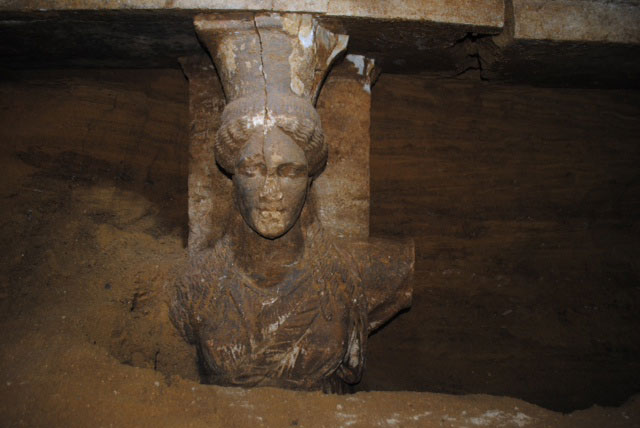
One of the "caryatids" in Amphipolis
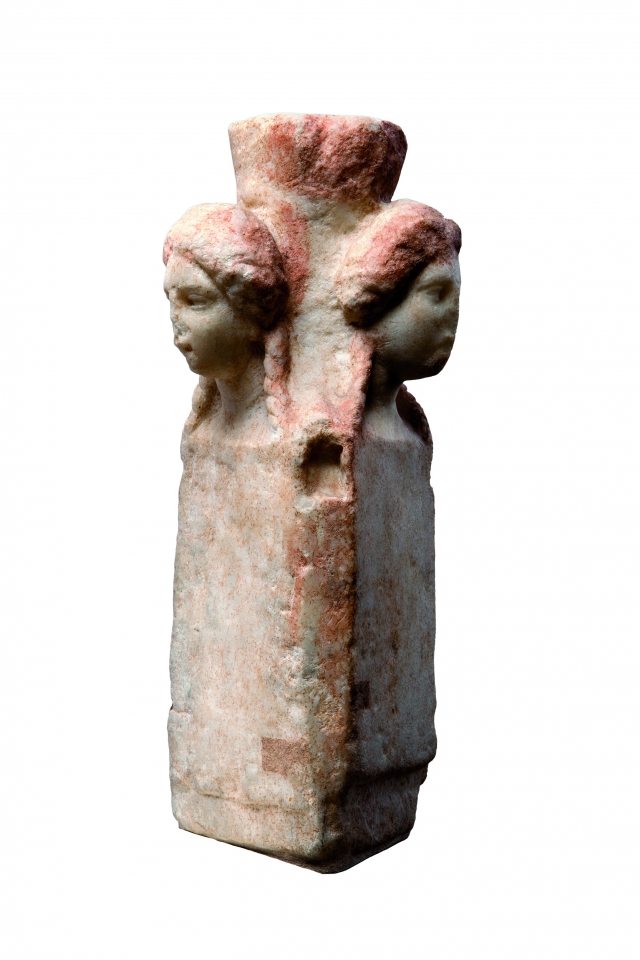
Three-headed Hecate, an exhibit of the Benaki Museum, part of the "Afterlife" exhibition at the Cycladic Art Museum in Athens
The beautiful mosaic on the floor of the third chamber of the tomb in Amphipolis was interpreted by archaeologists, who are working there, as a reproduction of the abduction of Persephone by Hades during which the chariot was led by Hermes Psychopompos. According to Stampolidis, however the mosaic does not present Hermes as Psychopompos, i.e. the guide of souls to the afterlife.
He drew attention to mythology and the works by Homer, who describes how god of the underworld Hades or Pluto fell in love with the beautiful daughter of Demeter and Zeus and decided to kidnap her. One day Persephone was picking flowers in the flourishing valley of Nysa in the company of Athena, Artemis and the Oceanides. At some point, she walked away in search of the most beautiful flower. When she bent down to pick a narcissus, the earth beneath her opened and a chariot driven by Hades emerged from its bowels. He was holding the chariot reins in one hand and grabbed the beautiful girl with the other. No one heard Persephone screaming and she found herself in the underworld.
"We know from mythology that Hermes was not involved in the abduction. In this case he is presented as the guide of bride Persephone to the underworld," said Stampolidis to stress his doubts about the interpretation of the mosaic. Significantly, Hermes is not present in the scene depicted on the mural that has been discovered in a grave in the necropolis of the capital of the Macedonian kingdom Aegae (near the modern town of Vergina - author’s note).
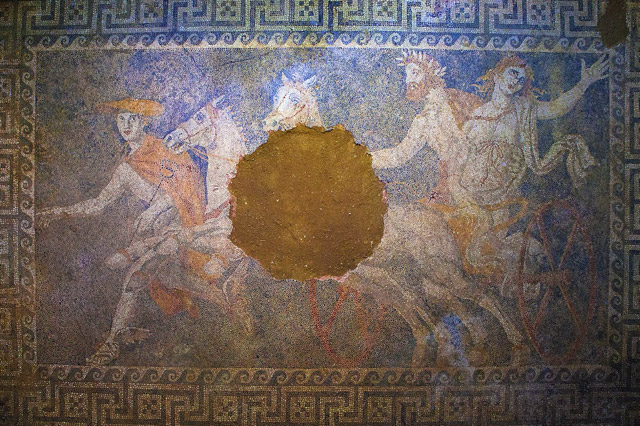
The mosaic in Amphipolis
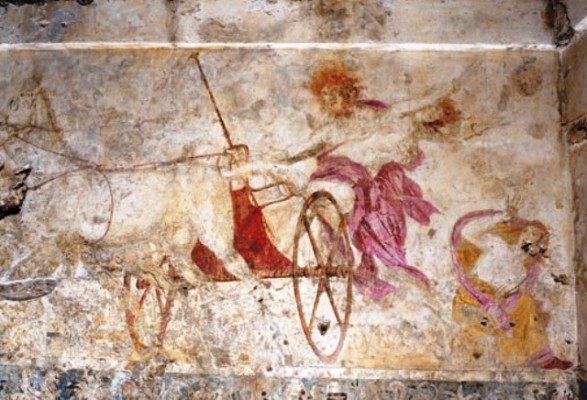
The mural in Vergina
The views of ancient Greeks perceived some of the dead as special which changed their burial ceremony. The tombstones or statues that designated or decorated the graves of dead warriors most often depict battle scenes that always end with the victory of the deceased. Moreover, a sculpture of a lion was frequently placed on the group tombs of warriors who had died in a war. On the one hand, the statue is the guardian of the grave and on the other, it reminds of the courage of the buried soldiers. The association with the Lion of Amphipolis is inevitable.

The Lion of Amphipolis
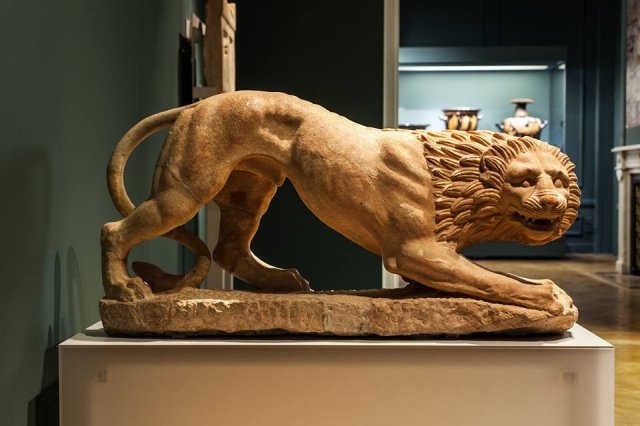
A sculpture of a lion resting on a grave, an exhibit of the National Archaeological Museum of Greece, part of the "Afterlife " exhibition at the Cycladic Art Museum in Athens
Nikolaos Stampolidis told how, several years ago, at the funeral of a woman in the region of Mani in the southern Peloponnese, her relatives put in her grave a gun and two knives for them to be taken to a man who had died earlier.
"The funeral rites have insignificantly changed from antiquity to the present day. One of them, namely the placement of objects in the grave, has survived to this day, therefore we should be particularly careful in our assessments of the sex of the deceased and avoid judging the deceased by them," he said.